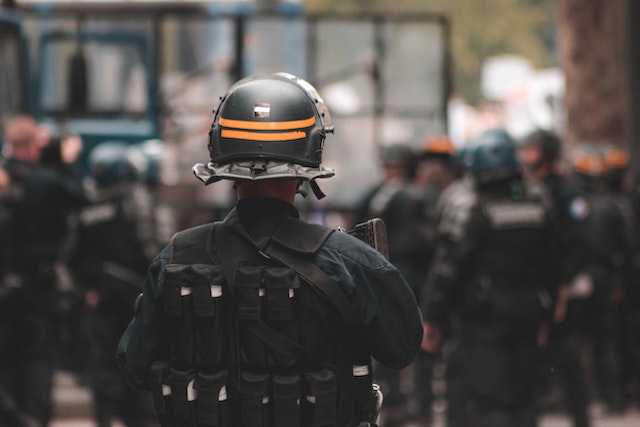
How does ceramic armor work? It shatters the projectile, absorbing and spreading out the kinetic energy from the projectile over a wider area.
The first thing to clear up is that ceramic armor plates are made of a different type of ceramics than the mugs and cups in your kitchen. There are many different types of ceramics. A ceramic is anything that is made by shaping an inorganic or nonmetallic material and then hardening it at very high temperature. The most common ceramic we are used to is pottery, which is made by shaping and heating clay. The process of firing the material makes it strong because the structure of the clay is altered. If you leave clay to dry, it will fall apart, but if you fire it at high temperature, the particles will bond together making it rigid, strong, and long-lasting. Ceramics are very strong, resistant to heat, but they can be brittle. This is why the ceramics in your kitchen shatter when you drop them. These ceramics are fired at a higher temperature than simple pottery, which makes them much stronger. However, to be useful, cups, mugs, and plates have to be light, which means they have to be thin. This makes them fragile. These ceramics may also have microscopic cracks and imperfections in them. If you drop one of these plates, the impact will cause forces that radiate through the plate, and it will shatter along the microscopic cracks. We have probably all dropped a mug and seen that happen firsthand.
Ceramics are used in many things, not just crockery. Bricks are ceramic. Many toilets are ceramic. Glass is a ceramic. There are ceramics in watches, cars, and phone lines. The space shuttle has ceramic plates to provide protection when it reenters the atmosphere because they can resist heat of over 1,260℃. There are bio-ceramics that are used in dental implants and replacement bones. And, of course, there is ceramic armor.
Ceramic armor is usually made from aluminium oxide, boron carbide, or silicon carbide. The material is shaped and fired to harden it. These are very hard materials. Boron carbide is one of the hardest known materials, after boron nitride and diamond. Boron carbide is generally used to protect against small arms fire and is used in body armor. It is very strong for its weight and can be made light enough to carry easily. Silicon carbide is more often used to stop larger arms fire but is heavier, so it is more commonly used on vehicles. Ceramic armor is very strong and very light, but ceramics are not great at being bent or when under tension. To make them stronger, the ceramic plates always have a backing plate that can stretch and flex a little. The backing plate is usually something like polyethylene or aramid (a type of synthetic fiber).
So, how does ceramic armor work? The main principle is that the material in the ceramic armor is harder and more dense than the projectile being fired at it. When a bullet is fired, it has a lot of kinetic energy and this energy is enough to carry it through many materials. However, when the projectile comes into contact with the ceramic armor, it is stopped and the built-up energy shatters the projectile, crumbling part of the ceramic at the same time. The energy from the projectile spreads out horizontally through the plate. The momentum of the projectile carries the broken-up pieces on through the ceramic plate and this is where the backing plate comes in. Most of the projectile pieces are eroded away, but the ones that make it through are caught by the fibers in the backing plate, keeping the wearer safe. A ceramic armor plate can only withstand one hit before it is compromised. To survive multiple hits, these days ceramic plates are made up of many tiny plates. It is very unlikely that two hits will fall in exactly the same place and that means they can survive repeated shots.
Ceramics are far lighter and stronger than steel plates. They are easier to wear and they can protect against more powerful rounds without extra weight. However, they are more expensive and more fragile. More care has to be taken over handling them. And this is what I learned today.
Photo by Mathias Reding: https://www.pexels.com/photo/police-officer-in-helmet-maintaining-order-4646764/
Sources
https://www.ar500armor.com/knowledge-base/bullet-hits-ceramic.html
https://www.apexarmorsolutions.com/post/armor-mythbusters-do-ceramic-plates-expire
https://www.globalspec.com/reference/38769/203279/uses-of-ceramics
https://www.nasa.gov/sites/default/files/atoms/files/shuttle_tiles_9_12v2.pdf
https://www.hot-clay.com/firing-up
https://depts.washington.edu/matseed/mse_resources/Webpage/Ceramics/ceramics.htm
https://en.wikipedia.org/wiki/Ceramic
https://en.wikipedia.org/wiki/Ceramic_armor
https://www.spartanarmorsystems.com/how-ceramic-body-armor-works

Pingback: How thick is tank armor? | I Learned This Today